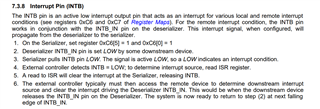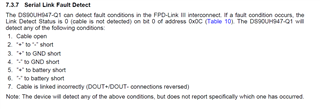Hi E2E,
When we design products, we need to match Deserializer IC such as DS90UB948.
We want to know how to recognize when a serdes error triggers an interrupt.
We see the combination function of INTB and INTB_IN, but we are not sure if the serdes error will cause Deserializer to PDB LOW.
Please help to explain how to identify serdes error triggered interrupt?
Thank you very much.




